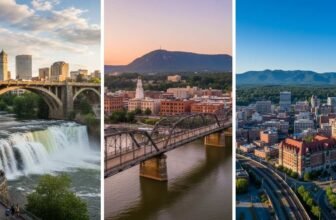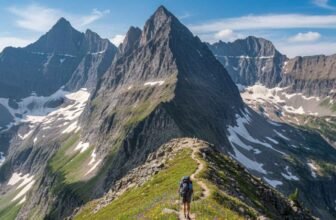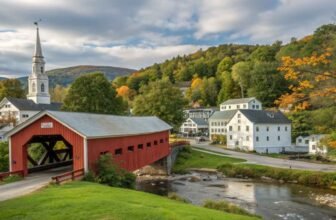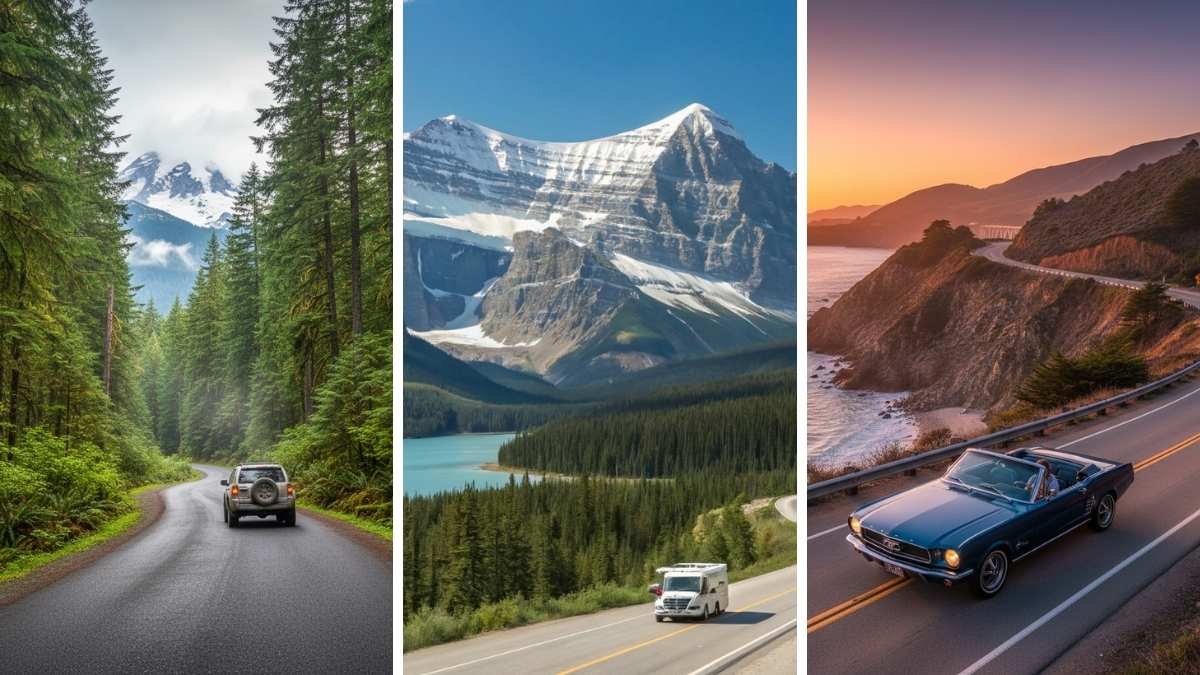
Road trips once meant mile-long highways, greasy diners, and the promise of freedom humming through the radio. But for a new generation, that version of adventure feels like a relic—too loud, too wasteful, too disconnected.
Millennials didn’t kill the great American road trip; they rewrote it. They traded neon motels for eco-lodges, souvenir stops for soul-stirring views, and endless drives for journeys that actually mean something.
What replaced the old routes isn’t just new geography—it’s a new mindset. These are the modern pilgrimages redefining how we chase horizons, one thoughtful, breathtaking detour at a time.
1. Route 66 → Replaced by Pacific Coast Highway (California)
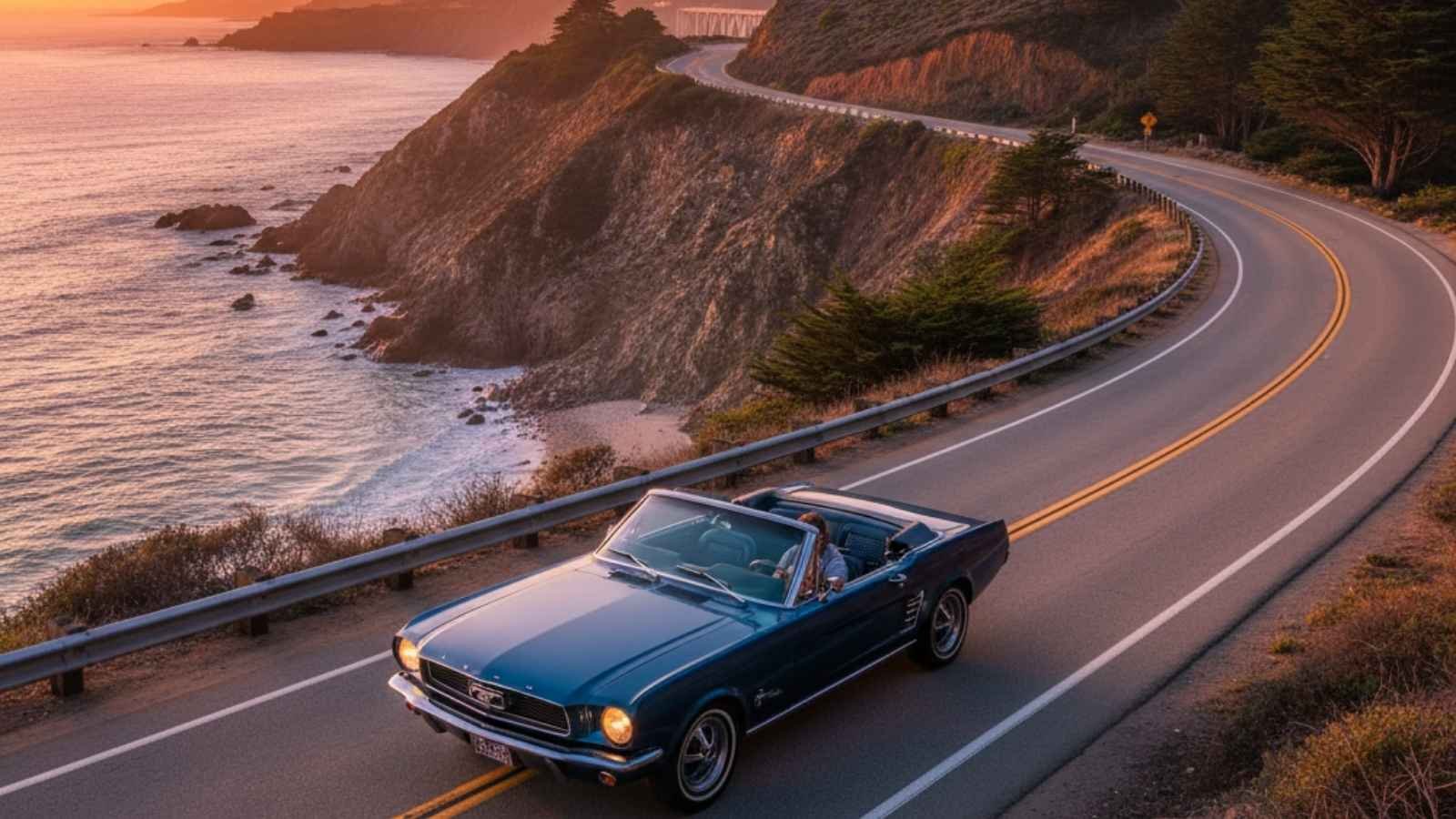
For decades, Route 66 was the ultimate American road trip, a rite of passage filled with vintage diners, faded motels, and roadside oddities. But for many millennials, the romance faded. The reality—crumbling pavement, chain restaurants replacing mom-and-pop stops, and a lack of sustainable travel options—made the “Mother Road” feel more nostalgic than adventurous. The younger generation began craving something more immersive, more scenic, and frankly, more worth the gas money.
That’s where the Pacific Coast Highway (PCH) stole the spotlight. Stretching along California’s rugged coastline, it offers a cinematic mix of ocean cliffs, redwood forests, and charming coastal towns—all while staying eco-friendly and experience-driven. Millennials swapped dusty gas stations for coastal coffee roasters and fast-food joints for local farm-to-table eateries. The trip became less about endurance and more about slow travel, the kind that rewards patience and curiosity.
The PCH resonates because it’s not just about covering miles; it’s about soaking in moments. Whether it’s camping near Big Sur or kayaking off the Mendocino coast, millennials reinvented the classic road trip into something that balances adventure with wellness and sustainability—a clear reflection of what modern travel has become.
Quick Trip Tips:
- Best Months to Visit: May–October (avoid summer crowds in July/August)
- Top Stops: Big Sur, Monterey, Malibu, Mendocino
- Vibe: Coastal relaxation meets modern adventure
- Travel Style: Convertible, campervan, or EV-friendly route
- Good To Know: Many stops along the PCH offer EV charging and eco-lodges
2. Blue Ridge Parkway → Replaced by Great Smoky Mountains National Park Loops
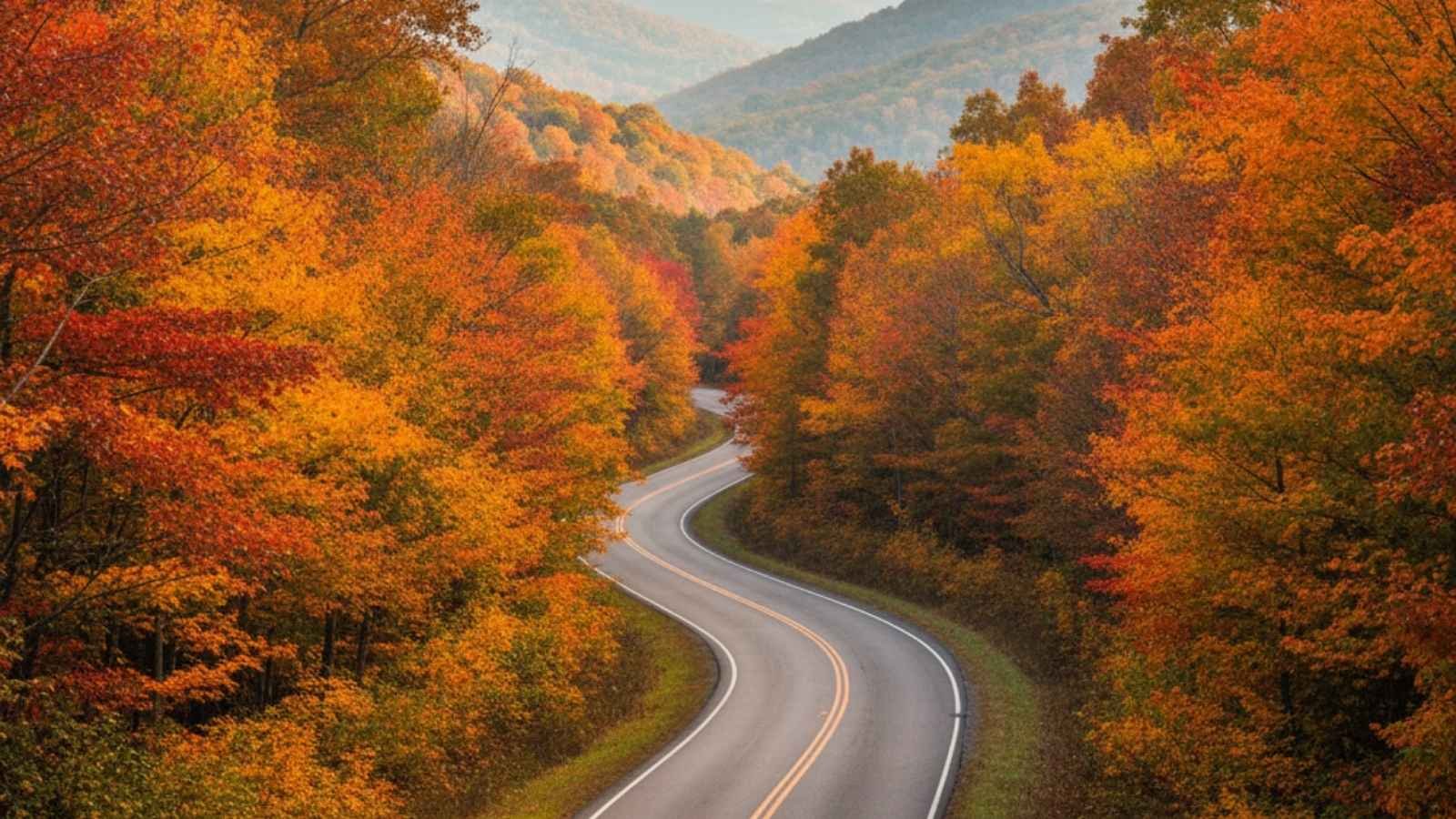
Once considered the most scenic drive in the eastern U.S., the Blue Ridge Parkway used to be a weekend staple. But its slower pace, limited digital access, and predictable tourist stops eventually lost their spark for younger travelers. Millennials began looking for wilder trails, more outdoor immersion, and opportunities to connect beyond the driver’s seat.
The Great Smoky Mountains National Park loops became the natural upgrade. Instead of sticking to the parkway, travelers began mixing short hikes, waterfall hunts, and local Appalachian culture into flexible loops that weave in and out of the Smokies. It’s an experience that’s active and photogenic, but still deeply grounding. The focus shifted from scenic driving to interactive exploring.
There’s a sense of quiet reward in these loops. Travelers trade the steady hum of the road for morning mist over Cades Cove or a coffee break in Gatlinburg’s artsy corners. It’s less of a “drive” and more of a choose-your-own-adventure experience that perfectly aligns with millennial values—flexibility, authenticity, and outdoor connection.
Quick Trip Tips:
- Best Months to Visit: April–June and September–October
- Top Stops: Cades Cove, Clingmans Dome, Gatlinburg, Fontana Lake
- Vibe: Mountain magic meets soulful simplicity
- Travel Style: Car or SUV, ideal for campers
- Good To Know: Early mornings offer the best wildlife sightings
3. Florida’s Overseas Highway → Replaced by Oregon Coast Scenic Byway
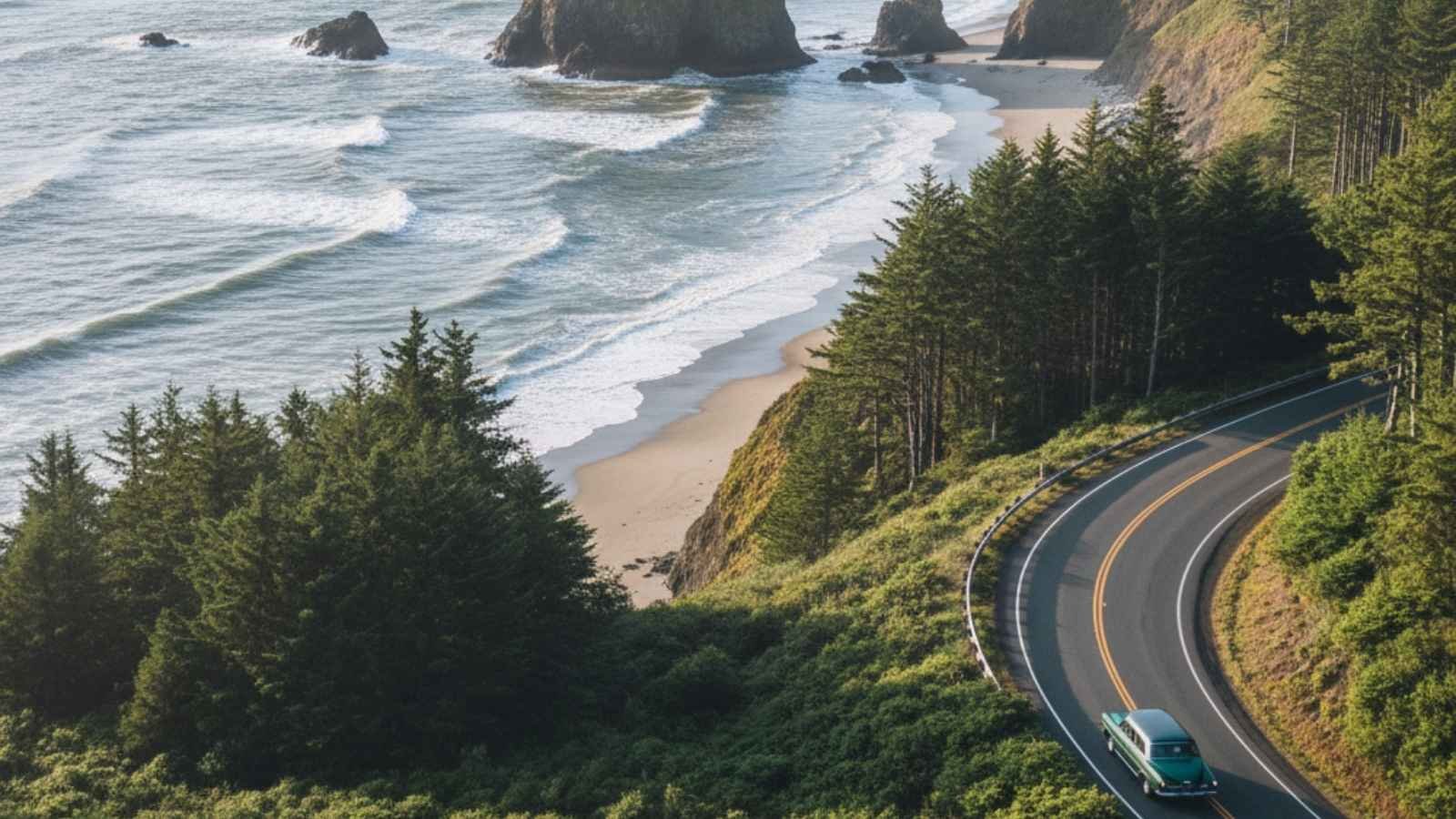
The Overseas Highway—stretching from Miami to Key West—was once the tropical dream drive. But over time, it turned into what many millennials now see as an overpriced, overcrowded stretch of traffic. The drive feels more like a congested commute than an escape. Plus, the environmental toll of overtourism in fragile coral areas became hard to ignore.
Enter the Oregon Coast Scenic Byway, a fresher, moodier alternative. It’s the kind of trip that feels cinematic yet deeply real—windswept beaches, fog-draped cliffs, sea stacks rising from crashing waves, and quiet coastal towns with independent coffee shops instead of chain hotels. It’s raw, untamed, and full of surprises that don’t feel manufactured for tourists.
Millennials gravitated toward Oregon’s coast because it rewards eco-minded explorers who value natural beauty over spectacle. There’s a rugged honesty to it—a sense that you’re part of something bigger than the drive itself. Whether it’s tide-pooling in Yachats or hiking to hidden waterfalls, it’s an escape rooted in serenity, not selfies.
Quick Trip Tips:
- Best Months to Visit: June–September for dry weather
- Top Stops: Cannon Beach, Depoe Bay, Florence, Samuel H. Boardman Scenic Corridor
- Vibe: Moody, coastal, and unpretentious
- Travel Style: Campervan or compact SUV
- Good To Know: Expect cool weather year-round; pack layers
4. The Great River Road → Replaced by New England Fall Foliage Routes
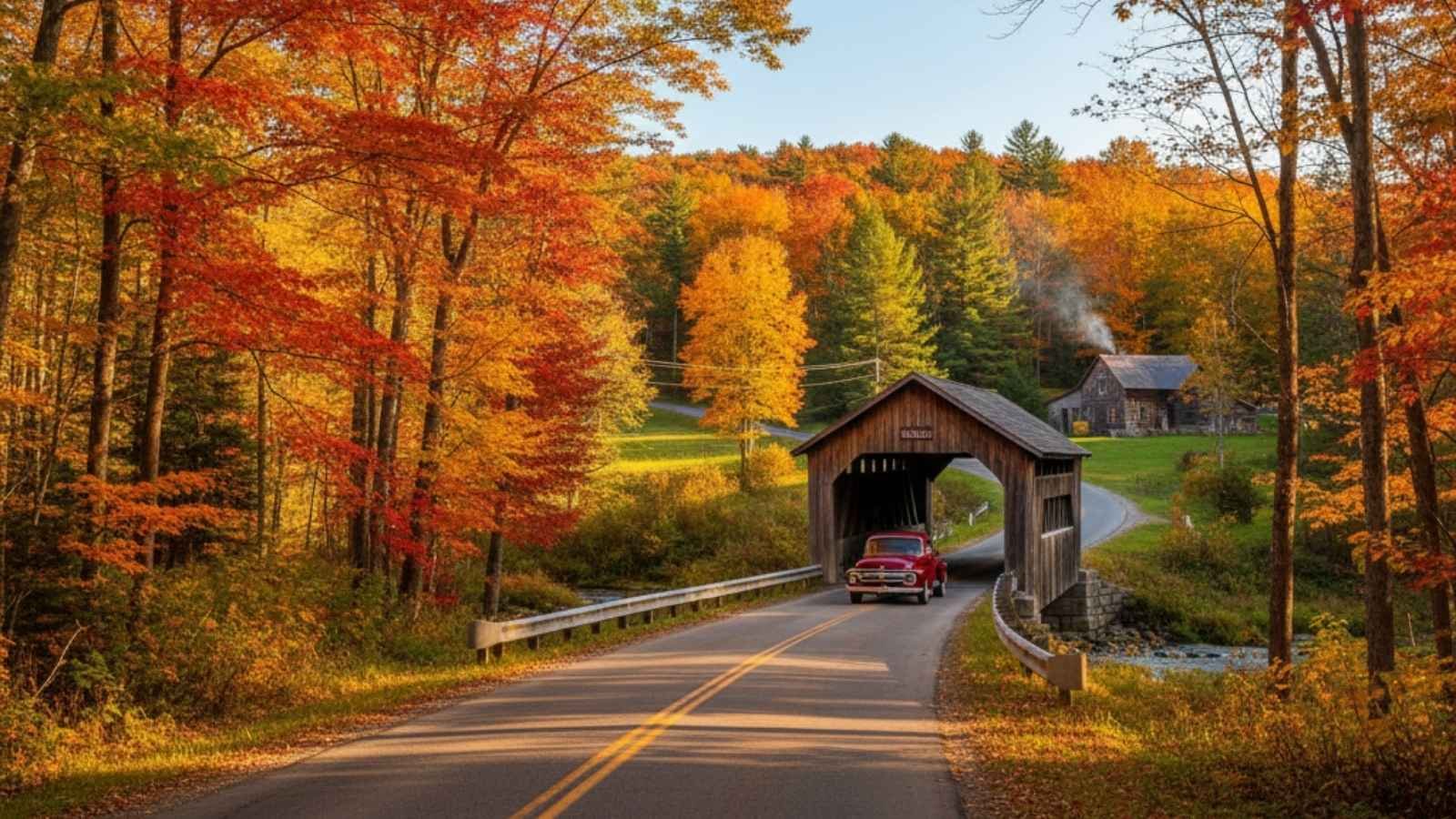
The Great River Road once promised endless Americana charm along the Mississippi, but younger travelers saw less appeal in long, flat drives lined with chain motels. It started to feel outdated—too long, too slow, and too predictable. Millennials instead began looking north for seasonal beauty and cultural texture, and found it in the fall roads of New England.
New England’s foliage routes—stretching through Vermont, New Hampshire, and Maine—offer everything the Great River Road couldn’t: colorful landscapes, historic small towns, farm stays, and craft breweries tucked into the hills. There’s no need to drive for hours between sights; here, every turn feels cinematic and new.
This new style of road trip is more about quality over quantity. Travelers can stay local, support small businesses, and still feel like they’ve discovered something timeless. The roads might be shorter, but the experience feels richer—a symphony of crisp air, cider donuts, and that crunch of golden leaves underfoot.
Quick Trip Tips:
- Best Months to Visit: Late September–Mid October
- Top Stops: Stowe (VT), Kancamagus Highway (NH), Acadia National Park (ME)
- Vibe: Cozy, colorful, and nostalgic in all the right ways
- Travel Style: Compact car or SUV, perfect for scenic photography
- Good To Know: Book stays early—peak foliage draws crowds
5. The Loneliest Road (U.S. 50, Nevada) → Replaced by Utah’s Mighty Five Loop
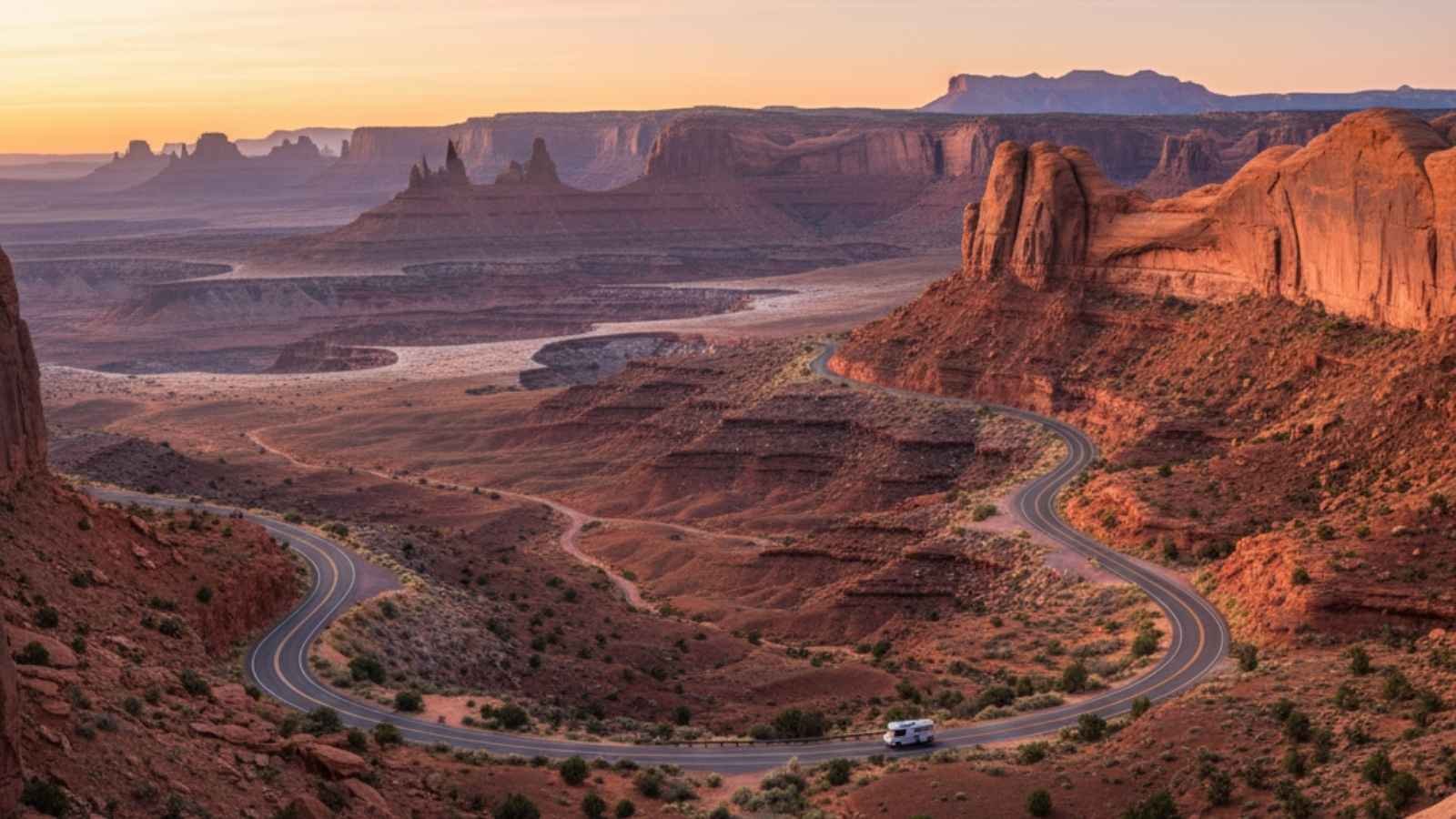
Once marketed as “The Loneliest Road in America,” U.S. 50 used to be a badge of honor for rugged explorers. But for many millennials, the novelty wore off. Long stretches of desert emptiness with few amenities felt more isolating than freeing. With limited photo stops, food options, or hiking access, it simply didn’t match what modern travelers crave—connection, variety, and nature that feels alive.
So they turned to Utah’s Mighty Five Loop—an epic circuit connecting five national parks: Zion, Bryce Canyon, Capitol Reef, Arches, and Canyonlands. It’s a dream route for anyone craving both adventure and visual drama. Each park feels like stepping into a different planet, and the drive between them bursts with photo-worthy detours.
The shift wasn’t about abandoning solitude—it was about finding meaning in it. Millennials traded the desolation of U.S. 50 for an immersive landscape full of trails, stargazing, and geological wonder. It’s the kind of road trip that feeds both the body and the soul, redefining what “the open road” means in today’s world.
Quick Trip Tips:
- Best Months to Visit: April–June and September–October
- Top Stops: Zion, Bryce Canyon, Capitol Reef, Arches, Canyonlands
- Vibe: Adventurous, awe-inspiring, and transformative
- Travel Style: Campervan or SUV, ideal for park hopping
- Good To Know: Park entry passes can save money if visiting all five
6. The Alaskan Highway → Replaced by Canadian Rockies Road Trip (Banff to Jasper)
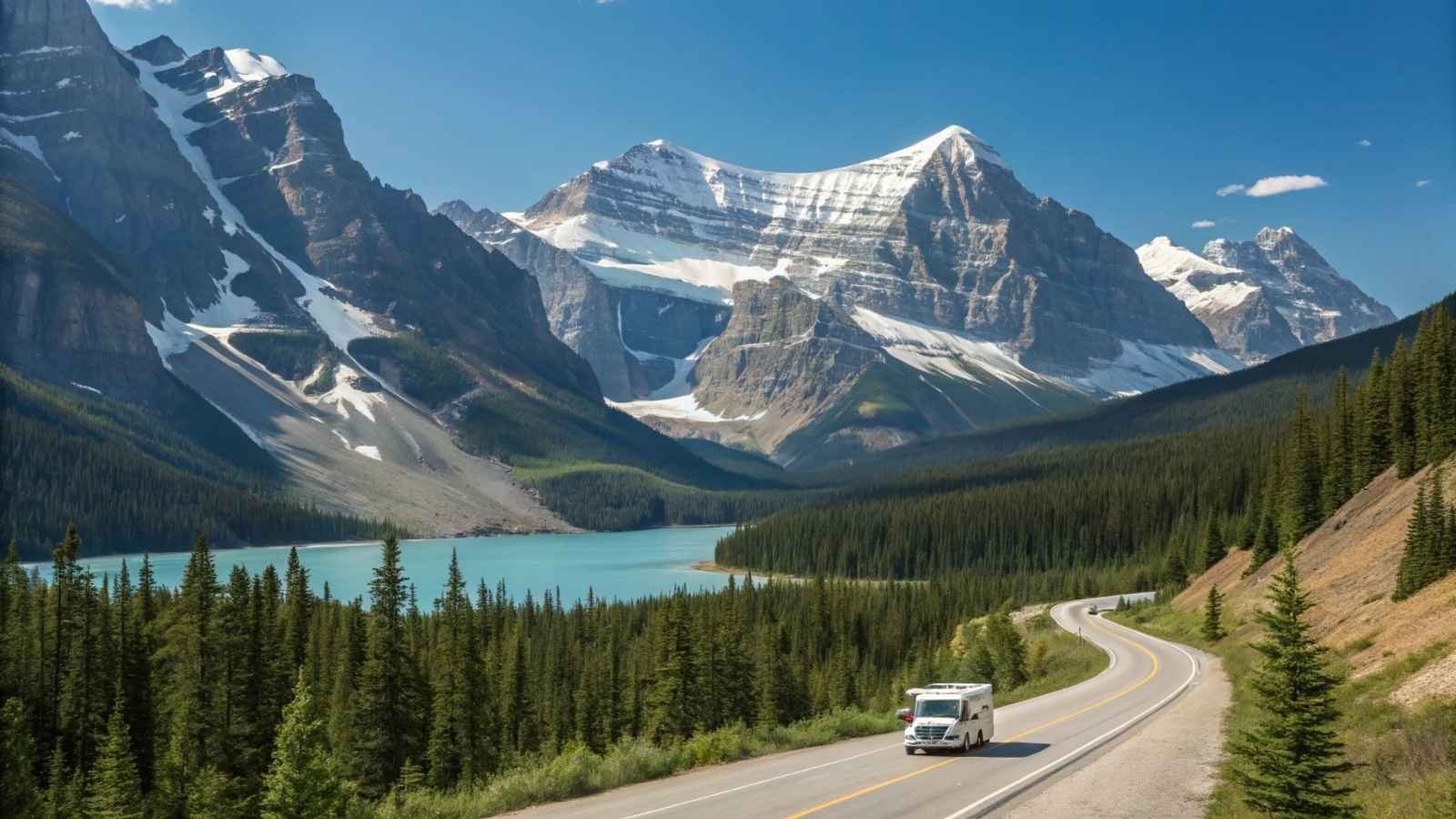
The Alaskan Highway was once a bucket-list adventure—a wild drive through remote terrain and endless horizons. But to younger travelers, it’s become too long, too rugged, and too resource-heavy for what it delivers. With rising fuel costs and limited connectivity, it started feeling more like a test of endurance than a journey of discovery. Millennials, ever efficiency-driven and experience-focused, began looking for a route that offered that same wilderness spirit but in a more accessible, immersive, and Instagram-worthy package.
They found it on the Banff to Jasper route, winding through the heart of the Canadian Rockies. This stretch combines dramatic alpine lakes, glacier-fed rivers, and peaks that look painted against the sky. It’s compact enough for a weeklong escape yet vast enough to feel like true wilderness. The trip offers modern comfort without losing its edge—chic cabins, local cafés, and wildlife crossings that feel straight out of a nature documentary.
The shift isn’t about abandoning adventure—it’s about upgrading it. Where the Alaskan Highway once symbolized isolation, the Banff-to-Jasper route now represents mindful exploration, the kind where travelers chase moments, not miles. From soaking in hot springs to stargazing under glacier-fed skies, it’s proof that the modern road trip is just as wild—only a little more intentional.
Quick Trip Tips:
- Best Months to Visit: June–September
- Top Stops: Lake Louise, Icefields Parkway, Athabasca Glacier, Jasper National Park
- Vibe: Wild luxury meets alpine serenity
- Travel Style: Campervan, EV, or compact SUV
- Good To Know: The Icefields Parkway is often called one of the world’s most scenic drives—worth taking slowly.
7. The Black Hills & Badlands Route → Replaced by Southwest Desert Loop (Arizona–Utah)
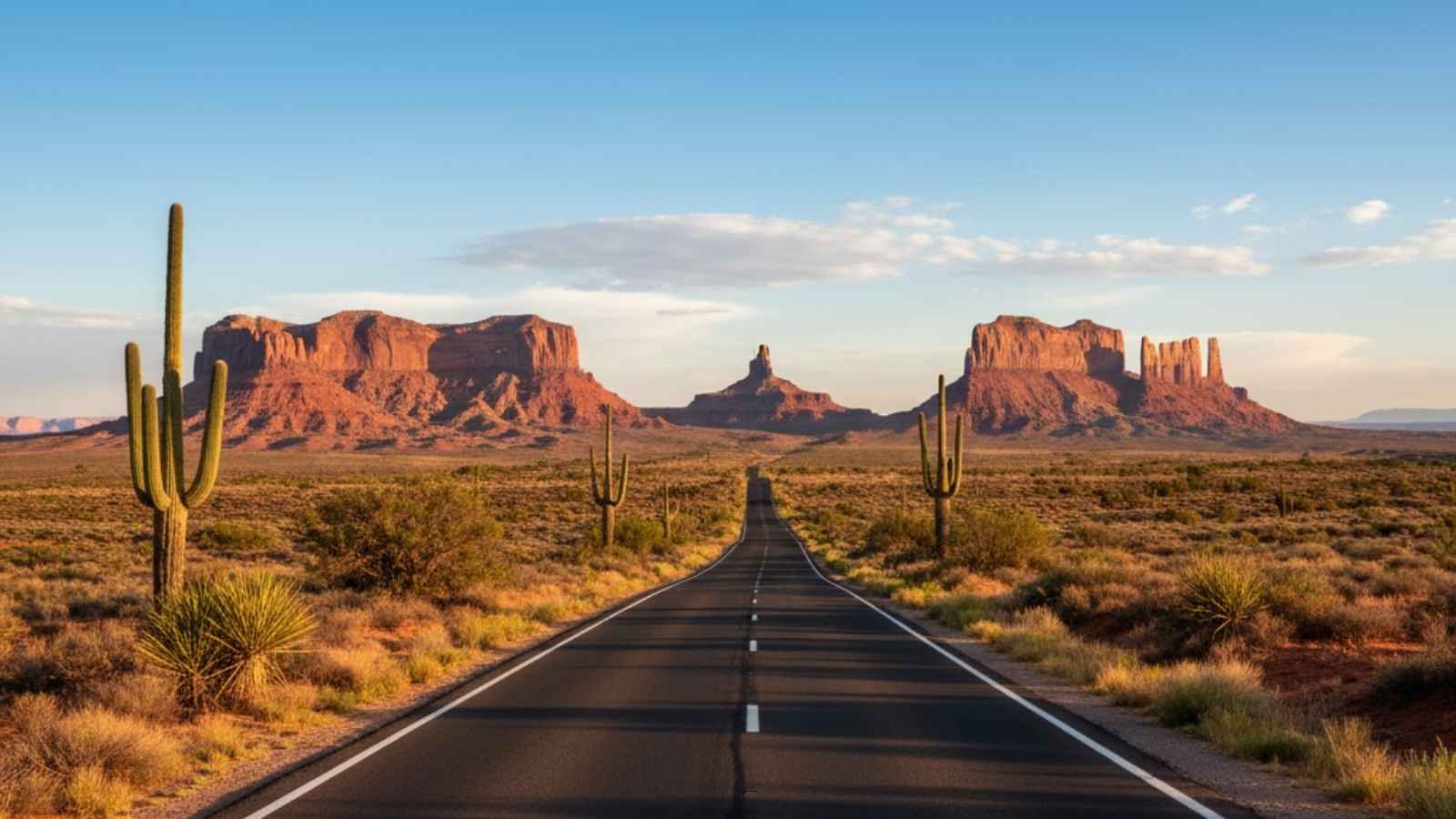
The Black Hills and Badlands Route used to be a symbol of freedom—rugged, sunburned, and steeped in Americana. But over time, it began to feel dated. Travelers grew weary of the crowded tourist traps, the kitschy roadside attractions, and the sense that the region hadn’t evolved with the times. Millennials began seeking landscapes that felt raw, cinematic, and spiritually charged, leading them to the Southwest Desert Loop—a masterpiece of red rock, open sky, and modern wanderlust.
The loop, connecting spots like Sedona, Monument Valley, and Lake Powell, offers a different kind of road story. It’s minimalist yet grand, the kind of terrain that makes you feel small in the best possible way. With yoga retreats tucked into canyons, glamping domes under star-smeared skies, and cafés that double as art galleries, the route aligns with how millennials travel: experience first, filter second.
What makes this swap so interesting is that it’s not just about replacing scenery—it’s about replacing mindset. The Black Hills celebrated Americana nostalgia; the Southwest celebrates earth’s artistry and personal stillness. It’s the kind of trip that feels both ancient and new every time you go.
Quick Trip Tips:
- Best Months to Visit: March–May and September–November
- Top Stops: Sedona, Monument Valley, Antelope Canyon, Horseshoe Bend
- Vibe: Desert mystique meets modern mindfulness
- Travel Style: SUV or adventure-ready camper
- Good To Know: Many sites are on Native land—book guided experiences to support local communities.
8. The Outer Banks Scenic Byway → Replaced by Pacific Northwest National Parks Circuit
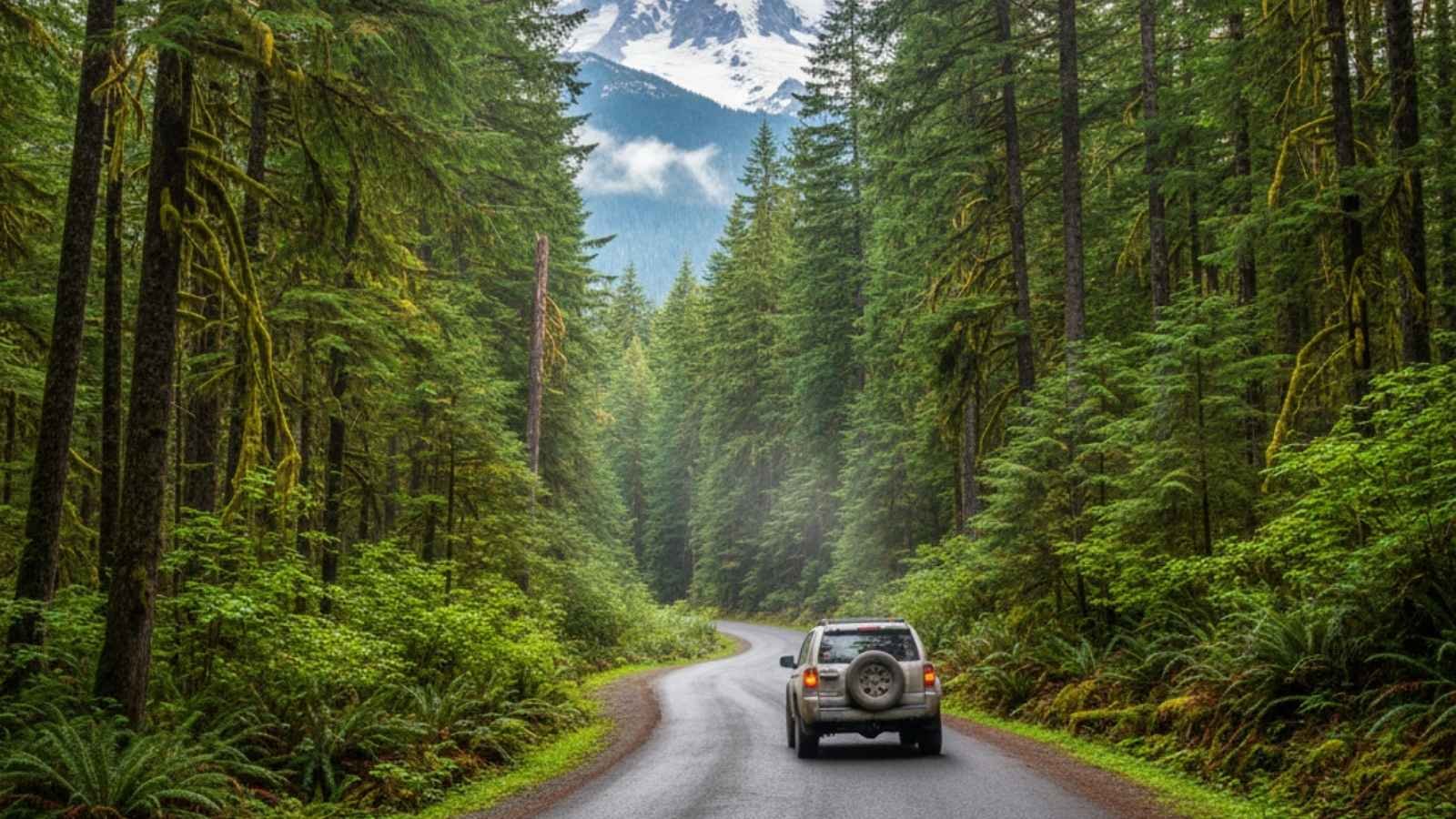
For years, the Outer Banks Scenic Byway was the go-to for ocean lovers—a string of coastal towns, ferry rides, and laid-back beaches. But it slowly lost its appeal as rising tourism turned quiet shores into crowded vacation hubs. For millennials craving authentic wilderness and moody coastal solitude, the Outer Banks began to feel like a postcard rather than a place.
Enter the Pacific Northwest National Parks Circuit, a fresh blend of sea, forest, and mountain—all in one sweeping journey. It ties together Olympic National Park, Mount Rainier, and the North Cascades, creating an adventure that feels like stepping into three ecosystems in a single trip. Travelers swap suntan lotion for hiking boots and trade beach bars for moss-draped forests and alpine lakes. It’s the evolution of the beach road trip—more introspective, less commercial, and infinitely more awe-inspiring.
This new route resonates because it offers balance. You can still have your ocean fix along the Olympic coast, but within a few hours, you’re hiking past glaciers or spotting waterfalls deep in the rainforest. It’s a reminder that millennials didn’t kill the classic road trip—they simply redefined it, turning it from a drive into a discovery.
Quick Trip Tips:
- Best Months to Visit: July–September (for accessible trails and dry weather)
- Top Stops: Olympic National Park, Mount Rainier, North Cascades, Seattle detour
- Vibe: Wild, moody, and restorative
- Travel Style: Campervan, hybrid car, or EV
- Good To Know: The loop is best enjoyed slowly—each park offers a completely different climate zone.


